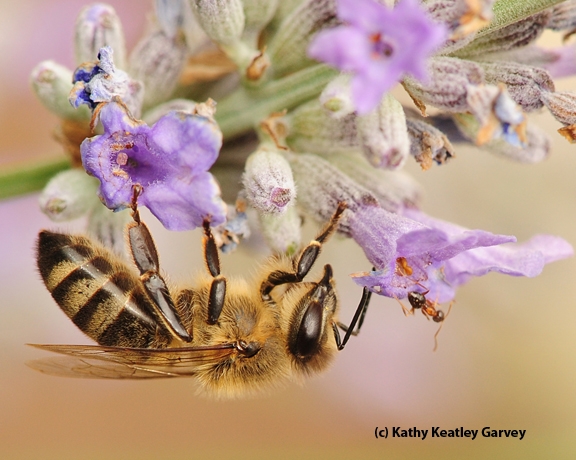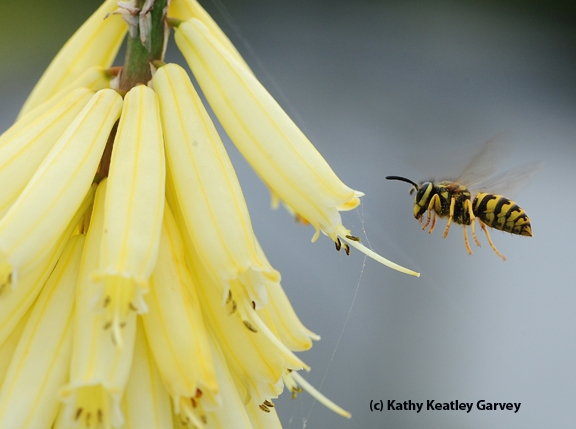Who would have thought?
Who would have thought that ants are more closely related to bees than they are to most wasps?
In ground-breaking research to be published Oct. 21 in Current Biology, a team of UC Davis scientists and a colleague from the Sackler Institute for Comparative Genomics, American Museum of Natural History, has found that ants and bees are more genetically related to each other than they are to social wasps such as yellow jackets and paper wasps.
"Despite great interest in the ecology and behavior of these insects, their evolutionary relationships have never been fully clarified," said senior author and noted ant specialist Phil Ward, professor of entomology at UC Davis. "In particular, it has been uncertain how ants—the world’s most successful social insects—are related to bees and wasps. We were able to resolve this question by employing next-generation sequencing technology and advances in bioinformatics. This phylogeny, or evolutionary tree, provides a new framework for understanding the evolution of nesting, feeding and social behavior in Hymenoptera."
The researchers used state-of-the-art genome sequencing and bioinformatics to produce this significant research.
The six-member team: Ward; molecular geneticist and assistant professor Joanna Chiu; honey bee scientist and assistant professor Brian Johnson; doctoral student-researcher Marek Borowiec of the Ward lab; and postdoctoral researcher Joel Atallah of the Johnson lab, all with the UC Davis Department of Entomology and Nematology; and visiting scientist Ernest K. Lee of the Sackler Institute for Comparative Genomics, American Museum of Natural History.
Ants, bees and stinging wasps all belong to the aculeate (stinging) Hymenoptera clade -- the group in which social behavior is most extensively developed.
Said Chiu: “With a phylogeny or evolutionary progression that we think is reliable and robust, we can now start to understand how various morphological and/or behavioral traits evolved in these groups of insects, and even examine the genetic basis of these phenotypic changes.”
Said Johnson, whose lab studies the genetics, behavior, evolution and health of honey bees: "Using transcriptomics we were able to resolve a long standing question regarding the evolutionary relationships between stinging wasps, ants, and bees. We found that ants and bees are more closely related than previously thought. This result should be important for future studies focused on eusocial evolution, as it suggests that morphology may not be a good indicator of evolutionary relatedness in these groups of organisms."
The abstract: "Eusocial behavior has arisen in few animal groups, most notably in the aculeate Hymenoptera, a clade comprising ants, bees, and stinging wasps. Phylogeny is crucial to understanding the evolution of the salient features of these insects, including eusociality. Yet the phylogenetic relationships among the major lineages of aculeate Hymenoptera remain contentious. We address this problem here by generating and analyzing genomic data for a representative series of taxa. We obtain a single well-resolved and strongly supported tree, robust to multiple methods of phylogenetic inference. Apoidea (spheciform wasps and bees) and ants are sister groups, a novel finding that contradicts earlier views that ants are closer to ectoparasitoid wasps. Vespid wasps (paper wasps, yellow jackets, and relatives) are sister to all other aculeates except chrysidoids. Thus, all eusocial species of Hymenoptera are contained within two major groups, characterized by transport of larval provisions and nest construction, likely prerequisites for the evolution of eusociality. These two lineages are interpolated among three other clades of wasps whose species are predominantly ectoparasitoids on concealed hosts, the inferred ancestral condition for aculeates. This phylogeny provides a new framework for exploring the evolution of nesting, feeding, and social behavior within the stinging Hymenoptera."
Attached Images:

